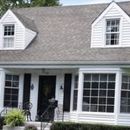To vent or not to vent?
Hello. I’m retro fitting insulation into a kneewall and dormer space. The only venting at this time is a gamble vent in the attic crawl space. I would like to bring these spaces into the thermal envelope but I’m not sure how to approach this. The bay windows obstruct any potential soffit venting so venting the roof deck there would be limited only to the gable vent at the top of a vent chute. Does that force the solution to an unvented attic approach? What would you recommend in this scenario? Thanks in advance, Mike
GBA Detail Library
A collection of one thousand construction details organized by climate and house part










Replies
HI Mike -
First, more important than venting is a continuous air control layer in your roof system. Essentially, you can't vent your way out of an air leakage problem.
Second, high to low venting systems are inherently more effective than gable to gable. There are venting products that accommodate closed or lack of soffits (such as EdgeVent: http://airvent.com/index.php/products/intake-vents/the-edge-vent) and midroof dormers and how to vent them (such as: https://dciproducts.com/shed-roof-roof-to-wall/).
Peter
Hi Peter. Thanks for the prompt response. I intend to air seal as best as possible. I was not familiar with those vent products. Very interesting solution. So it looks like I can vent those blocked soffits after all. I’ve been considering hiring a roofer to install ridge vents but I suspect that’s going to get pricey. That may have to wait. Thanks for your help!
Installing ridge vents should not be too expensive — it goes really fast. All the roofer generally needs to do is cut open a slot on the ridge (one cut on either side), pull out the strips of sheathing, and nail down the ridge vent which will usually be covered with matching shingles.
Don’t let them use the foam-type ridge vent that gets shingled over. Use a “real” rigid ridge vent system that maintains the open vent space over time. The foam type looks like a roll of foam air filter material. The rigid systems are stiff plastic and normally have continuous slotted vents on both sides of the peak.
Bill
The best ridge vent I've used, and the one I spec, is Shinglevent 2 by Accuvent. It's rigid plastic, as Bill recommends, and is good at blocking wind-driven rain.
I also agree with Bill that you should do the ridge vent. The ridge vent plus gable vent area should have roughly the same net free area as the combined eave vents. If you have too much, you could find that it depressurizes the attic and draws air through ceiling penetrations. Not enough and you're wasting venting capacity.
All great info! Thanks for the recommendations.